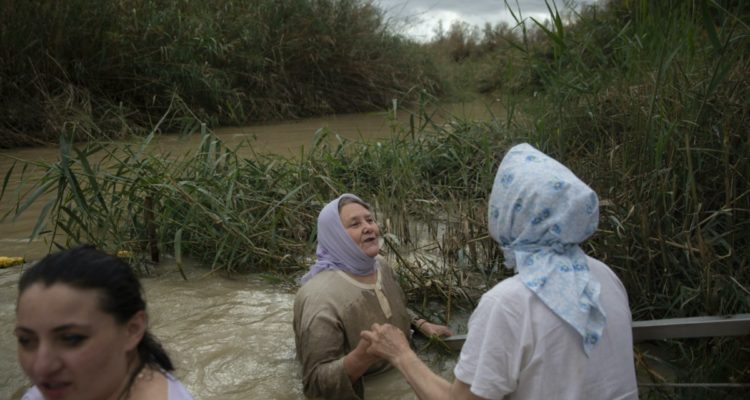Kristen Burckhartt felt overwhelmed. She needed time to reflect, to let it sink in that she had just briefly soaked her feet in the water where Jesus is said to have been baptised, in the Jordan River.
“It’s very profound,” said the 53-year-old visitor from Indiana. “I have not ever walked where Jesus walked, for one thing.”
Tourists and pilgrims come to the site from near and far, many driven by faith, to follow in Christ’s footsteps, to touch the river’s water, to connect with Biblical events.
Symbolically and spiritually, the river is of mighty significance to many. Physically, the Lower Jordan River of today is a lot more meager than mighty.
By the time it reaches the baptismal site, its dwindling water looks sluggish, a dull brownish green shade.
Its decline, due to a confluence of factors, is intertwined with the entanglements of the decades-old Arab-Israeli conflict and rivalry over precious water in a valley where so much is contested. Championing the transboundary Jordan’s revival without wading into the thicket of the disputes that have fueled its deterioration can be a challenge.
A stretch of the river, for instance, was a hostile frontier between once-warring Israel and Jordan; river water also separates Jordan on its eastern bank from the Israeli-occupied West Bank, seized by Israel in a 1967 war and sought by the Palestinians for a state.
“It’s a victim of the conflict, definitely. It’s a victim of people, because it’s what we did as people to the river, basically, and now adding to all this it’s a victim of climate change,” said Yana Abu Taleb, the Jordanian director of EcoPeace Middle East, which brings together Jordanian, Palestinian and Israeli environmentalists and lobbies for regional collaboration on saving the river. “So it’s a victim in every way.”
Read the article by Mariam Fam in Sight Magazine.

